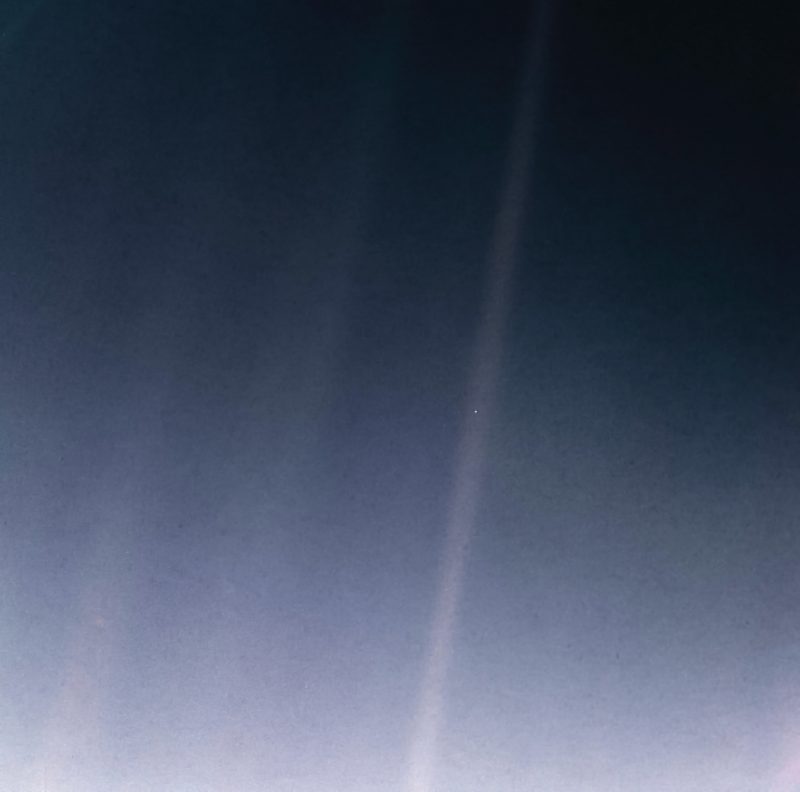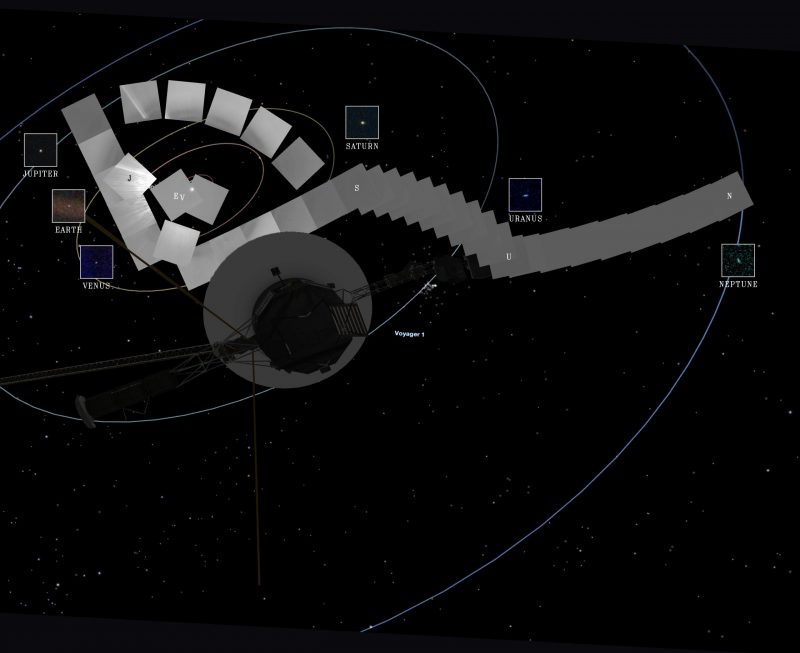
February 14, 1990: the Pale Blue Dot
The Voyager 1 spacecraft, out near Saturn, took this iconic image of Earth 33 years ago. It turned out to be one of the most memorable images ever taken from space. Astronomer Carl Sagan wrote in his 1994 book Pale Blue Dot:
Look again at that dot. That’s here. That’s home. That’s us. On it everyone you love, everyone you know, everyone you ever heard of, every human being who ever was, lived out their lives. The aggregate of our joy and suffering, thousands of confident religions, ideologies, and economic doctrines, every hunter and forager, every hero and coward, every creator and destroyer of civilization, every king and peasant, every young couple in love, every mother and father, hopeful child, inventor and explorer, every teacher of morals, every corrupt politician, every ‘superstar,’ every ‘supreme leader,’ every saint and sinner in the history of our species lived there – on a mote of dust suspended in a sunbeam.
An updated look at the Pale Blue Dot
NASA said on February 12, 2020, that it has now updated the Pale Blue Dot image, using modern image-processing software and techniques. NASA explained:
… the Voyager project planned to shut off the Voyager 1 spacecraft’s imaging cameras to conserve power because the probe – along with its sibling Voyager 2 – would not fly close enough to any other objects to take pictures. Before the shutdown, the mission commanded the probe to take a series of 60 images designed to produce what they termed the Family Portrait of the Solar System. Executed on Valentine’s Day 1990, this sequence returned images for making color views of six of the solar system’s planets and also imaged the sun in monochrome.
Carl Sagan named the image
The popular name of this view comes from the title of the 1994 book by Voyager imaging scientist Carl Sagan. He originated the idea of using Voyager’s cameras to image the distant Earth and played a critical role in getting the family portrait taken.
The direction of the sun is toward the bottom of the view (where the image is brightest). Rays of sunlight scattered within the camera optics stretch across the scene. By coincidence, one of those light rays intersects dramatically with Earth.
From Voyager 1’s vantage point – a distance of approximately 3.8 billion miles (6 billion km) – Earth appears separated from the sun by only a few degrees. The close proximity of the inner planets to the sun was a key factor as to why engineers couldn’t take these images earlier in the mission. At that time, our star was still close and bright enough to damage the cameras with its blinding glare.
Scientists combined green, blue and violet spectral filters from the Voyager 1 Narrow-Angle Camera for this composite. Voyager took these photos at 4:48 UTC on February 14, 1990. That was just 34 minutes before Voyager 1 powered off its cameras forever.
Our family portrait


Bottom line: February 14, 2023, is the 33rd anniversary of the Voyager 1 image of Earth. Voyager was near Saturn when it took this image, which is now known as the Pale Blue Dot.











